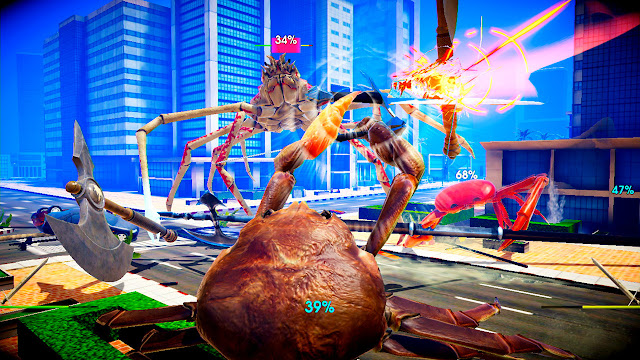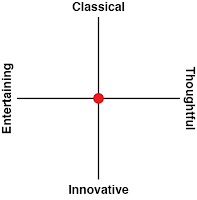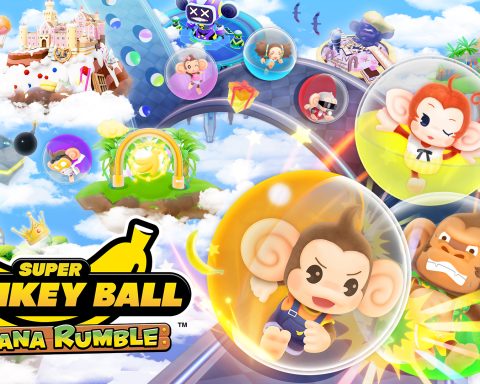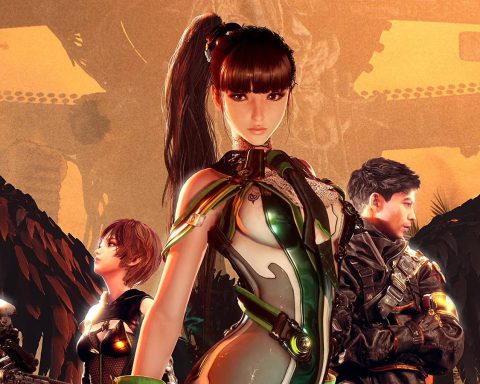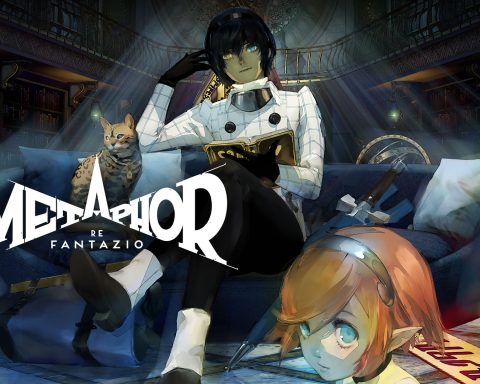We already knew what the developer behind Fight Crab was capable of. The previous title, Ace of Seafood, was a manic, truly Dadaist trip of a game, eschewing such mundane considerations as “good gameplay” to instead throw players into something wild, different, and really quite subversive to the expectations we allow ourselves to have with the video games we play. Fight Crab is very much a continuation of everything that Ace of Seafood stood for.
That’s the first hour or two of play. After a while, you start to learn how to compensate for the deliberately slow animations and the visual mess that occurs when claws and legs get tangled up in the heat of the melee. You start to get tactical about the action, and Fight Crab starts to make sense as a set of gameplay mechanics. At that point, the higher-level AI, which would roll you effortlessly beforehand, starts to make sense as an opponent and – dare I say it – Fight Crab reveals itself to be a nuanced fighting game that you can, in fact, take seriously. It’s certainly different and as we know in this industry, different is off-putting, but Fight Club (editor’s note: Fight *Crab* – I thought I caught myself with this, despite wrongly typing it almost every single time. Damn it). but is eminently even, consistent, and fair in the application of its specific sets of rules, and it works at what it’s offering.
In Fight Crab, a lobster can be unhorsed from a seal, before picking up a tank to continue the fight. Glorious. #FightCrab #NintendoSwitch pic.twitter.com/zH4u2kIWlt
— DDNet – We like Japanese games 😀 (@MattSainsb) September 20, 2020
Of course, most people aren’t going to take Fight Crab any more seriously than others take Dead or Alive seriously as a fighter rather than boob animation simulator. That is to say, it doesn’t really matter how good the underlying mechanics were for these things, as people are going to see what they see. In Fight Crab’s case, they’re going to see a crab riding a seal into battle against another crab dual-wielding pistols and just chalk the whole thing up as Antonin Artaud’s A Jet of Blood made animate. Fight Crab never stops being amusing, but it’s not because it does dumb and unexpected things. It’s amusing because there is a very precise, very specific method to the madness, and it results in a beautiful kind of chaos that – and I say this completely genuinely – deserves the same eye that a Salvador Dali work does.
To understand why, you first need to remember that Antonin Autaud’s Dadaism and Salvador Dali’s surrealism movements were effectively reactionary art movements; they were the rejection of logic, reason, and the aestheticism of the modern capitalist society at the time. More bluntly, they were antagonistic art forms that represented the chafing that creatives felt when outside forces attempted to dictate what does and does not belong as “art.”
Now consider what fighting games actually are for a moment. Of all the genres out there, fighting games are the most rule-driven and expectations of players are that they will be consistent, across the genre, in the application of those rules. When people talk about fighting games, it’s always about the balance, the animation cancels, the timing and (of course) the technical elements such as FPS and netcode. These are all critical to a fighting game and you only need to play one of the lesser-regarded fighting games to understand just how inferior a fighting game is seen to be when it strays outside of the pre-set colouring lines, even a little. The reason people look down on those games is almost always because they fail to meet the pre-set expectations of a good fighter.
In Fight Crab, unrestrained aggression is brutal, but effective. #FightCrab #NintendoSwitch pic.twitter.com/yHUaA1eRIg
— DDNet – We like Japanese games 😀 (@MattSainsb) September 17, 2020
Fight Crab is a thorough rejection of all of that. The idea that precision is core to the fighting game experience (i.e. with each press of the button you gain an immediate and predictable sense of feedback) is lost by the long looping animations of each attack and the visual mess that you see when the crabs are flailing around at one another in melee. The idea of balance is thrown out by some kinds of crabs having a very distinct advantage, and some of the weapons being quite deliberately over-powered. Fight Crab has no problem with environments that actively get in the way of the combat (another fighting game “best practice” no-no), and in a million other small ways it subverts the genre it belongs to at its very core. It’s still highly playable within its own set of rules, just as surrealism is generally highly aesthetically. It’s just that the game will forever be niche because it beats its own drum and subverts every expectation to the point that most people who, let’s face it, just want to enjoy their time with their games, aren’t going to get what they expected.
Of course, Fight Crab is also incredibly funny, and that humour comes from the eclectic juxtapositions that occur at every opportunity. It’s dictionary-definition surrealism, as per André Breton: surrealism aims to “resolve the previously contradictory conditions of dream and reality into an absolute reality, a super-reality.” Often people assume that surrealism is just random elements thrown together, but that being the case, the work would lose its connection to the real. No, surrealists work to specific sets of rules and a grounding in the world we understand – the reality, to subvert it via their dream-world elements. Fight Crab plays to perfection the idea of crabs being cumbersome, clunky but powerful animals against the dream-like (and very funny) oddity of watching one riding a seal joust against another using a tank as a shield.
Game developers have a long familiarity with surrealism as a movement, with everything from Deadly Premonition and the Yakuza series through to Death Stranding and the upcoming The Eternal Cylinder demonstrating an understanding of that value of juxtaposition between the real and the ethereally unexpected as a way of building humour, deepening our understanding of and connection to character and world, and keeping players on their toes. Typically, however, that surrealism is of a superficial kind. It’s an aesthetic and a vehicle to make the game “quirky” and therefore PR and social media-friendly. There’s nothing wrong with that approach, but contrasting those titles and Fight Crab should make Fight Crab seem all the more brave. Fight Crab isn’t just surrealism as an aesthetic; it is willing to apply the surrealism to the very core mechanics that power it, and as off-putting as the game can be at first, a few hours of play later reveals something truly beautiful and uncompromising in thematic tone. The list of “surrealist” games that do that is much, much smaller.
– Matt S.
Editor-in-Chief
Find me on Twitter: @mattsainsb
The critic purchased a copy of this game.


